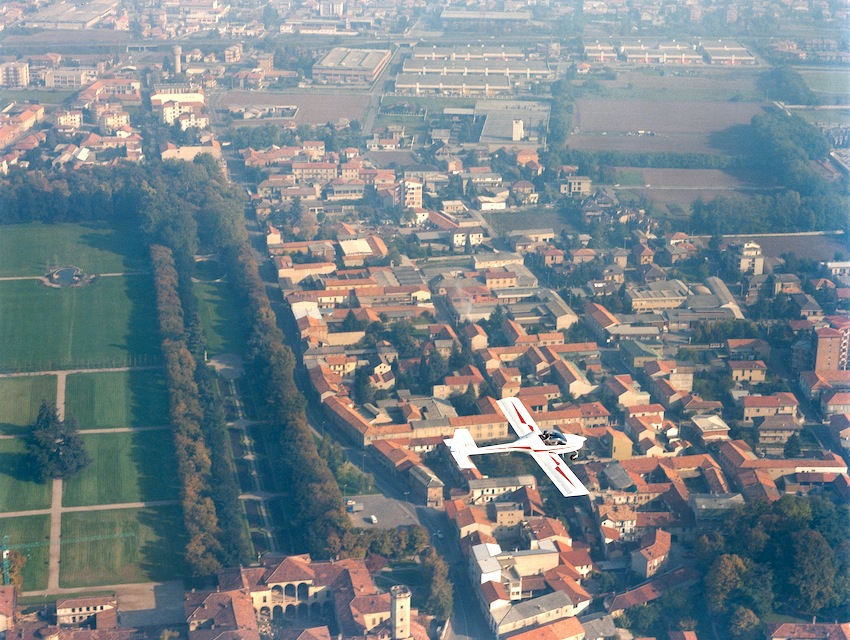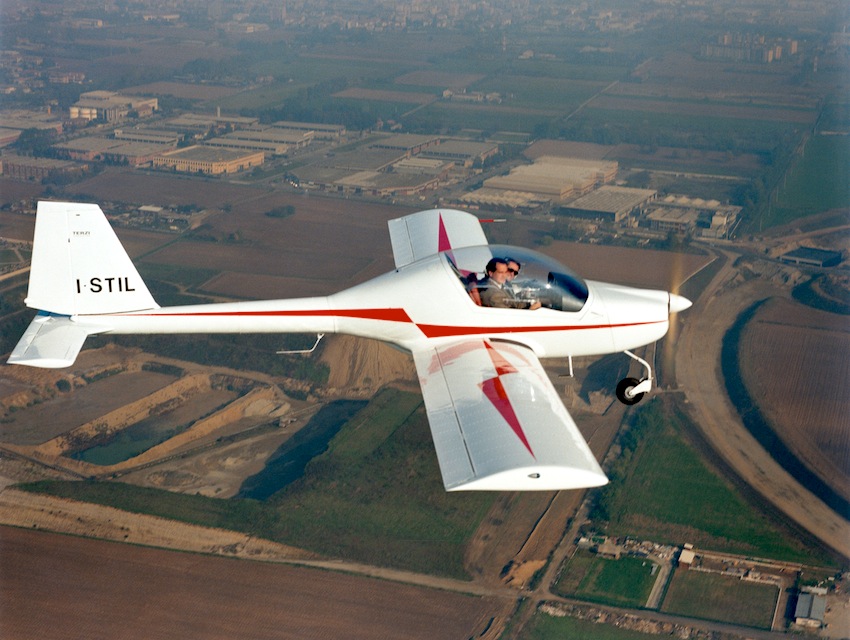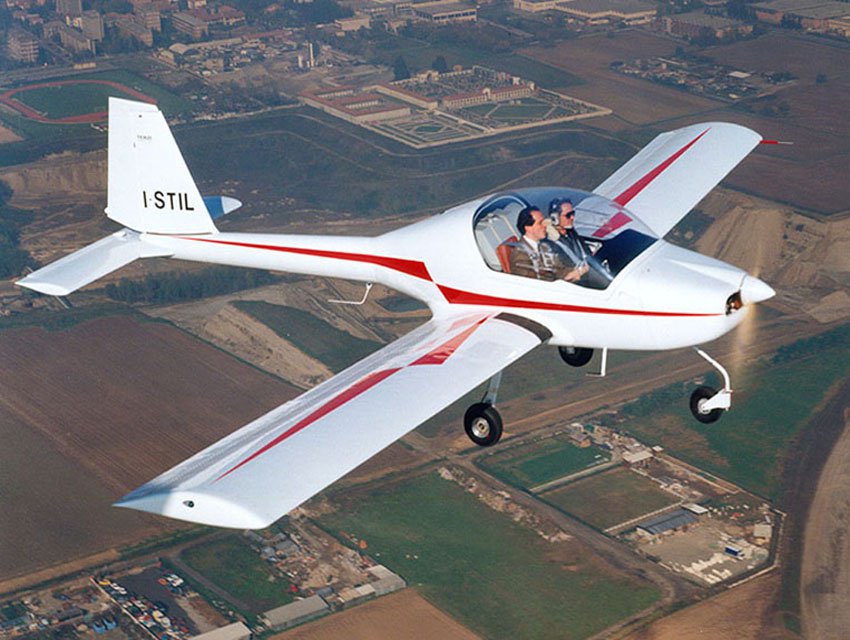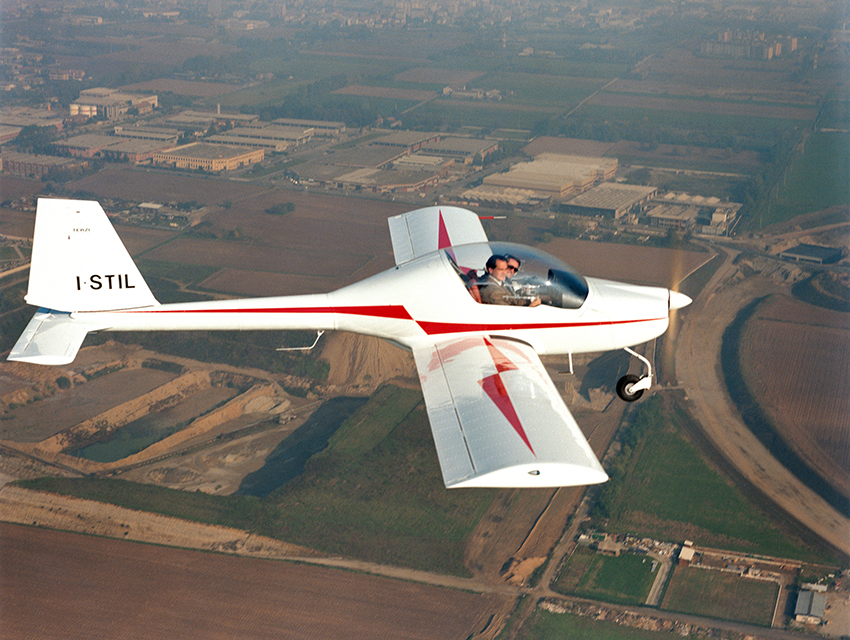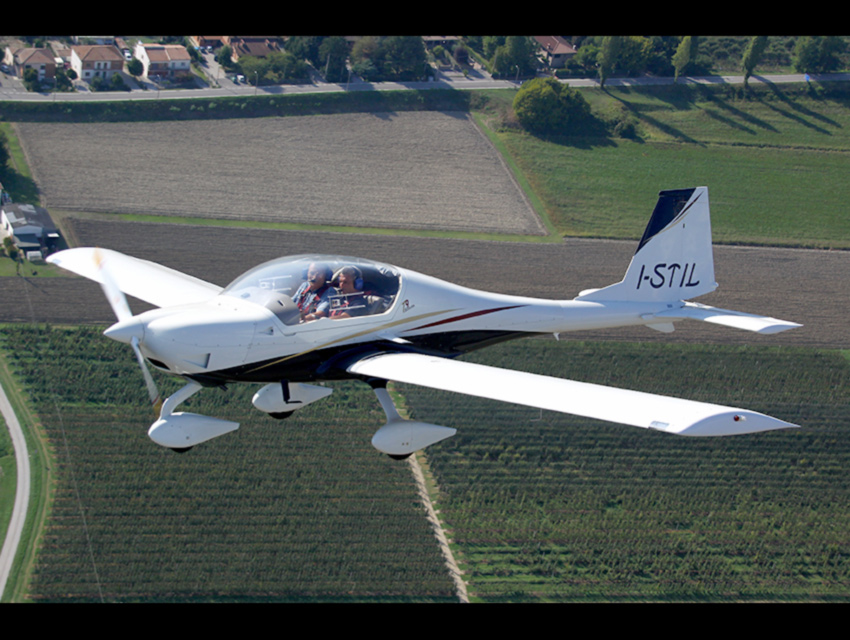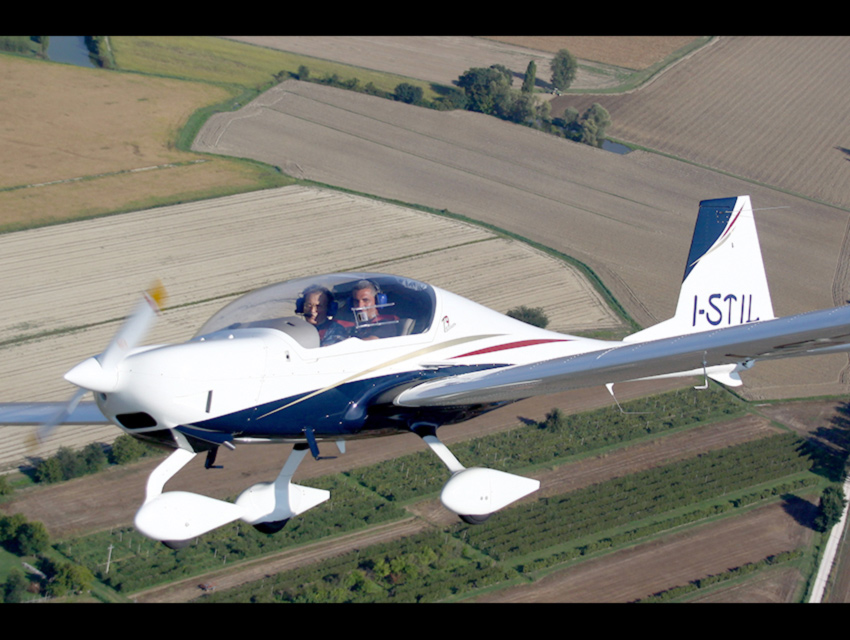|
The design of this aircraft wed two main characteristic usually in contrast: an advanced aerodynamics with a simple, classically constructed airframe conceived as an assembly of small components.
The first characteristic, combined with the lightness of the aircraft, allows excellent flight performance with low power and as a consequence with low fuel consumption.
The second one allows the maintenance and production process to be optimized by using small organizations scattered around the world to service a niche market with a broadly international clientele.
The T9 aerodynamic design represents the state of the art in respect to the speed flight envelope of this type of plane. The aerodynamic efficiency is shown in particular in the shape of the fuselage, in the adoption of Wortmann profiles, in the high aspect ratio of the horizontal surfaces and in the adoption of a horizontal, one piece, all-moving tailplane.
The STILETTO combines this advanced aerodynamics with an original architecture for the structure.
The fuselage consists of two parts: a crash resistant steel tube framework where the crew is, and a demountable tail boom carrying the empennages.
The aircraft systems are principally located in the framework area which is covered with removable panels of composite material.
For a training and club aircraft, i.e. an aircraft intensely used by a number of different pilots with different flying experience, maintenance-related costs play a predominant role.
This design approach ensures total and ready accessibility to the systems for inspection, maintenance and repair, thus calling for less time.
Demountability also facilitates storage and shipping operation.
About production process, the T9 is designed to be produced on an industriai scale and it is aimed at those architectural, engineering and technological solutions which proved the easiest to implement enabling easy and fast transfert of manufacturing know-how.

|
|
UP
- TYPE
- Two-seat light personal, training, club and aerial work aircraft.
- WINGS
- Cantilever low-wing monoplane of constant chord.
- Wortmann wing section.
- Two demountable half wings of all metal structure (2024 T3) with main spar, forward and rear auxiliary spars and riveted aluminium alloy skin.
- All metal mass-balanced ailerons actuated by pushrods in the fuselage frame section, by cables in the wings.
- All metal, manually operated, two-position trailing-edge flaps.
- FUSELAGE
- Consist of two part: a crash resistant steel tube framework where the crew is and a demountable tail boom of aluminium alloy structure carrying the empennages.
The framework area is covered with easily removable panels of composite material.
- TAIL UNIT
- Cantilever structure of aluminium alloy.
- One piece all-moving tailplane, with combined anti-servo trim tab, actuated by pushrods in the fuselage frame section, by cables in the tailboom section.
- Rudder actuated by cables.
- LANDING GEAR
- Non-retractable tricycle type.
- Main-wheels carried on flat spring fiberglass cantilever legs.
- Nose free pivoting and non-steerable weel carried on cantilever spring steel leg.
- Hydraulically-actuated differential brake control system operated by the pedals from the cockpit.
- POWER PLANT
- One 100 hp Rotax Bombardier 912, with propeller reduction gear, 4 stroke engine with opposed cylinders.
- Three-blade fixed-pitch wood propeller.
- Two wing integrated fuel tank capacity 120 litres.
- ACCOMODATION
- Two individual adjustable seat, side by side.
- Cockpit canopy hinged at rear to open upward (provision for taxiing with the canopy cracked open for hot-weather ventilation).
- Baggage space aft of seats.
- SYSTEM
- Electrical system of 12/14 V includes an alternator as main power source and a battery.
- External power socket in fuselage side for engine starting.
- AVIONICS
- A large instrument panel allows the simultaneous installation of traditional gauges and a modern glass cockpit for training purposes.
|
|
UP
| DIMENSIONS, EXTERNAL |
Wing span
Length overall |
10,26 (m)
6,85 (m) |
| AREAS |
| Wings, gross |
12,31 (sq.m) |
| WEIGHTS AND LOADINGS |
| Weigth empty |
360 (Kg) |
| Max T-O and landing weight |
600 (kg) |
| Useful load |
240 (kg) |
| G limit |
4,4 (.) |
| PERFORMANCE |
| Max cruising speed at S/L |
220 (km/h) |
| Rate of climb, sea level (IAS 120/125 Km/h) |
6+ (m/s) |
| Range, 200 Km/h, sea level, 30 min. rsv |
1200 (km) |
| Stall, flaps up, MTOW |
80 (Km/h) |
| Stall, flaps down, MTOW |
74 (Km/h) |
| Service ceiling |
5250 (m) |
| Demonstrated crosswind |
15 (kts) |
| Takeoff ground roll |
80 (m) |
| Takeoff over 15 m (50 ft) obstacle |
170 (m) |
Landing over 15 m (50 ft) obstacle
(normal braking) |
175 (m) |
UP
|
